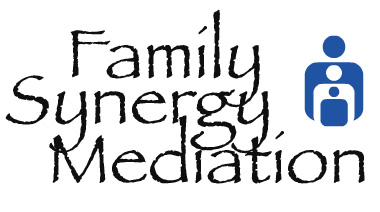Negotiating spousal maintenance can often feel like an uphill battle. It’s a process filled with strong emotions, financial worries, and conflicting advice from attorneys. In some cases, the parties involved are miles apart in what they expect to receive or pay, with little hope of coming to an agreement. But even in the most difficult negotiations, success can be found with the right strategy.
In this post, I’ll walk you through a case I mediated where two clients were over half a million dollars apart in their expectations for spousal maintenance. Both were prepared to go to court and were certain they’d win. However, by using the principles of BATNA (Best Alternative to a Negotiated Agreement), WATNA (Worst Alternative to a Negotiated Agreement), and ZOPA (Zone of Possible Agreement), I was able to guide them to a mutually satisfying solution. Let’s explore how.
What Are BATNA, WATNA, and ZOPA?
Before diving into the story, let’s break down these essential concepts.
- BATNA (Best Alternative to a Negotiated Agreement): This is your fallback plan if negotiations fail. It represents the best possible outcome you can achieve outside of the negotiation, whether that means taking the issue to court or pursuing another avenue.
- WATNA (Worst Alternative to a Negotiated Agreement): This is the worst-case scenario if negotiations fall apart. It’s the outcome you want to avoid, where you end up with less than you need and it costs you far more than anticipated.
- ZOPA (Zone of Possible Agreement): ZOPA is the sweet spot where the BATNAs of both parties overlap. This is where negotiation is most likely to succeed, as it represents the range where both parties’ alternatives are preferable to their worst outcomes.
Why BATNA and WATNA Matter
BATNA and WATNA are powerful tools because they provide a roadmap for decision-making during negotiations. Without understanding these alternatives, parties are often left making emotional decisions based on unrealistic expectations, which can lead to a failed negotiation or an unnecessary legal battle.
Let’s take a look at a real-world example to see how BATNA, WATNA, and ZOPA can help resolve even the most difficult negotiations.
The Spousal Maintenance Case: A Gap of Half a Million Dollars
I recently worked with a couple in a spousal maintenance negotiation. Both clients had professional legal advice and were confident in their bottom-line numbers. The problem? They were over $660,000 apart in what they thought they should receive or pay. Both clients were prepared to walk away from the table and take their chances in court, fully convinced that a judge would side with them.
Things weren’t looking good.
Step 1: Evaluating BATNA and WATNA
The first step was to help both parties evaluate their true BATNA and WATNA. This required a hard look at what might actually happen if they pursued litigation instead of negotiating.
- For the payor: What would the cost of legal fees, time lost, and potential outcomes in court look like? Was it realistic to assume a judge would grant a favorable ruling?
- For the recipient: What were the actual chances of receiving a court-ordered settlement as high as expected? What were the costs and risks involved in waiting for a court decision?
Through this process, it became clear that both clients had been operating with some unrealistic assumptions, mostly based on biased legal advice.
Step 2: Deconstructing Attorney Bias
Both clients had received advice from their respective attorneys. As is common in these situations, each attorney presented a dramatically different picture of the likely outcome, with both sides confident they were in the right. But when we deconstructed how each attorney had arrived at their numbers, we could see that there was a lot of subjectivity involved.
For example, if you present two different attorneys with the same financial situation but position one client as the likely payor and the other as the recipient, you often get very different estimates for spousal maintenance. This is because attorneys may naturally advocate for their clients’ interests, and legal answers can vary widely within the boundaries of the law.
By breaking down these biased estimates and applying a more objective approach, we were able to narrow the gap between the two figures to around $2,000 per month—a much more manageable difference.
Step 3: Factoring in Hidden Costs
One thing both attorneys had failed to include was the hidden cost of the legal process itself. Taking the case to court would involve substantial legal fees, court costs, and significant time commitments. On top of that, there were financing charges for lawyer payments and the emotional toll of a prolonged legal battle.
By factoring in these hidden costs, we were able to adjust each client’s BATNA and WATNA, bringing them closer to a range that made negotiation far more appealing.
Step 4: Defining the Zone of Possible Agreement (ZOPA)
Once we had a clearer picture of the realistic outcomes for both parties, we could identify the ZOPA—the range within which both parties’ BATNAs overlapped. This gave us a defined range to work with, where both the payor and recipient could make the settlement work.
At this point, both clients could see that an agreement was not only possible but preferable to going to court. The negotiation was essentially a success, even though we hadn’t yet nailed down the exact number.
Step 5: Structuring the Agreement
The final step was to structure a spousal maintenance agreement that worked for both parties. We decided on a plan with higher payments in the initial years and lower payments later on, which allowed both clients to feel comfortable with the arrangement.
By factoring in risk, time, and the variability of court outcomes, we built a deal that stayed within the BATNA for both parties, ensuring that they both walked away from the negotiation with a win.
The Power of BATNA, WATNA, and ZOPA
This case highlights the power of understanding your alternatives before jumping into litigation. Without a clear view of BATNA and WATNA, both clients were prepared to walk away from the table, convinced that court was the better option. But once they had a clearer understanding of their risks and options, they were able to reach an agreement that worked for both sides.
The takeaway? Always evaluate your BATNA and WATNA before making decisions in any negotiation. By identifying your Zone of Possible Agreement, you can save time, money, and emotional stress—and achieve a better outcome for everyone involved.
Conclusion
Spousal maintenance negotiations can be challenging, especially when both parties come in with dramatically different expectations. But by carefully evaluating BATNA, WATNA, and ZOPA, you can bring even the most difficult negotiations to a successful conclusion.
If you’re negotiating spousal maintenance or any other family law matter, consider these tools as essential to finding a workable solution.
Next Steps:
In my next article, I’ll discuss the power of Private Caucuses in mediation and how to use them effectively to achieve better outcomes. Stay tuned!










